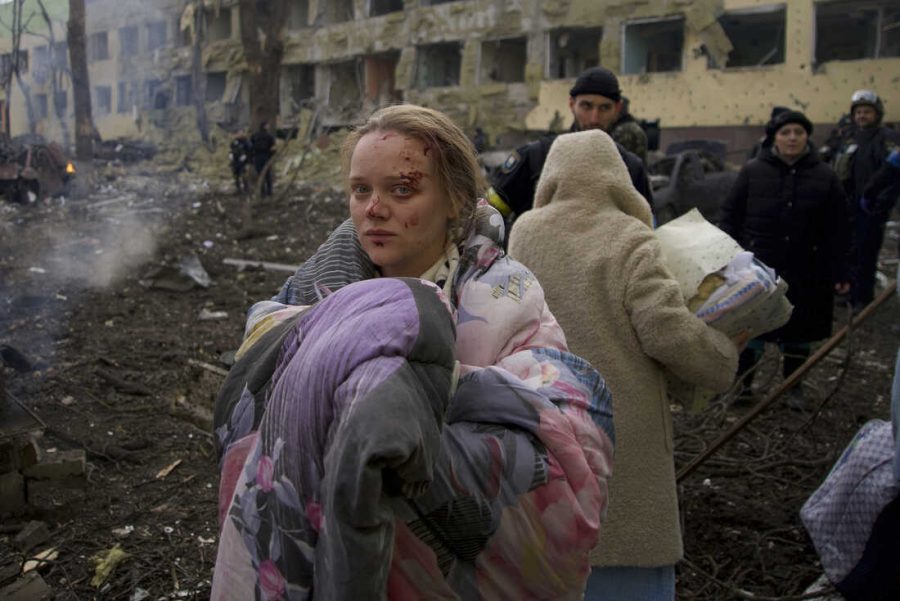Russia’s Attack on the Most Vulnerable
A pregnant Ukrainian woman, Mariana Vishegirskay, is visibly shaken after a Russian airstrike destroys the maternity hospital where she was receiving medical care. Photo by Mstyslav Chemov.
April 6, 2022
On March 9th, a mother-to-be heaves through the waves of labor. Beads of sweat rest atop her furrowed brow as doctors bustle around her. “One last push,” she hears a distant voice utter. So, she complies, her vision straining against the blinding sunlight of a nearby window. She is mere moments away from meeting her newborn son. But in that instant, a booming detonation severs her joy. The crash reverberates through her, triggering an unnerving ringing in her ears. It’s a bomb. Tears stream down her face as the gleaming window glass shatters.
“We were lying in wards when glass, frames, windows, and walls flew apart. We don’t know how it happened. We were in our wards, and some had time to cover themselves. Some didn’t.” These were the words of Mariana Vishegirskaya, a pregnant survivor of a merciless Russian airstrike that demolished a maternity and children’s hospital in Mariupol, Ukraine. Although Mariana was injured during the attack, her face splattered a crimson red as she exited the rubble with a heavy heart, she thankfully gave birth to a healthy baby girl the following day. Yet, other mothers were not so lucky. Their haunting stories reflect the tormenting reality of life in Ukraine amidst the ongoing Russian invasion. Although Russia’s actions have been denounced by leaders worldwide, the country continues to defend its inhumane attack against defenseless, hospitalized civilians.
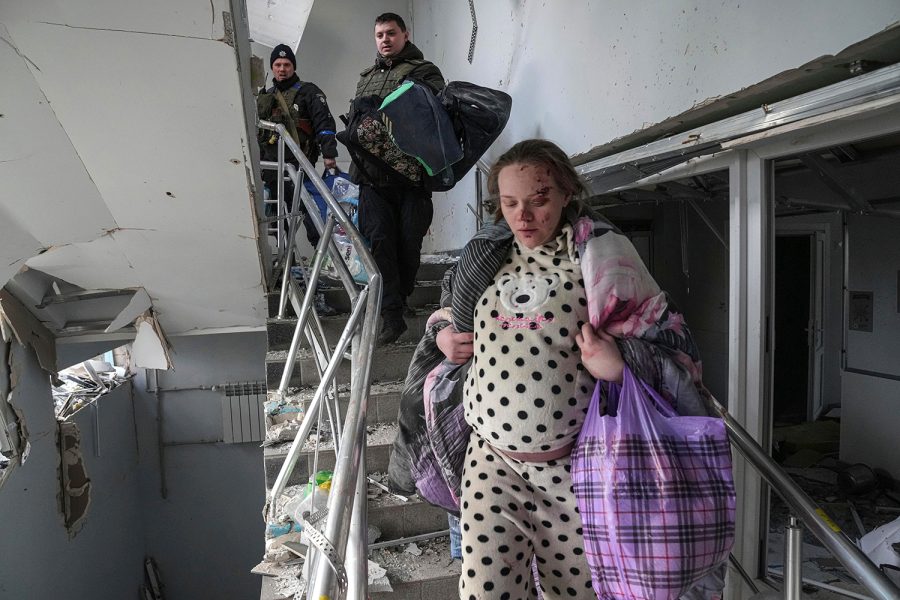
The Mariupol Bombing
The attack on the maternity hospital in Mariupol cost the lives of five people, and injured seventeen others, among them children, women, and doctors. At the scene, perhaps the most heartbreaking image was that of an injured pregnant woman who had to be evacuated. First responders say that as they carried the woman away from the debris, she cried out, “Kill me now!” because she realized she was losing her baby. The mother-to-be suffered from a crushed pelvis and detached hip as a result of the shelling. Despite an emergency cesarean section and resuscitation efforts, both the unidentified woman and her baby died.
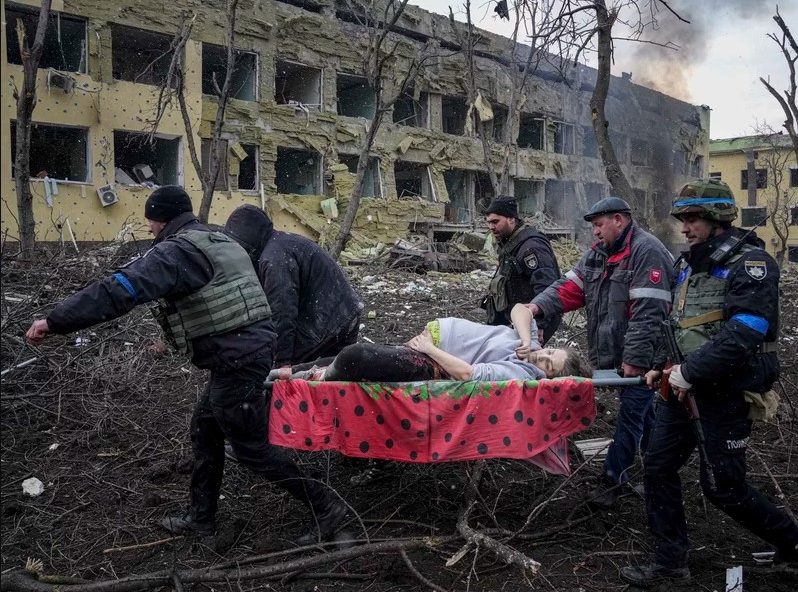
This woman’s story shook the world, with the photo of her ashen skin and bloodied belly coming to symbolize Russian cruelty. Like other innocent patients at the hospital, she posed no threat to Russian military forces, yet a Russian attack took everything from her. However, amidst accusations of deliberately committing genocide, Russian officials retorted that the hospital was a justifiable military target. They claimed that members of the Ukrainian military were stationed there and that no civilians – neither patients nor hospital staff – were present. These unfounded assertions sparked waves of rage and indignation alongside the already present sorrow in Ukraine.
Inspection of the hospital revealed that a two-story deep crater formed at the site where the munition was dropped. Weapons experts agree that the bomb must have had to weigh at least 1,000 pounds in order to create such a large crater and the exhaustive damage that easily charred cars.

Regrettably, as of March 24th, the World Health Organization (WHO) has confirmed that 64 Russian attacks have been conducted against Ukrainian health care facilities. So, the Mariupol tragedy is not an isolated incident. Rather, it is a strategic wartime move, a recurrent infringement on human rights that is meant to demoralize and weaken Ukraine.
Russia’s Response
For weeks, Russian officials and conspiracy theorists have tried to downplay the Russian airstrike on the Mariupol maternity and children’s hospital. Notably, the Russian ambassador to the Netherlands accused the victims of being “crisis actors,” individuals who are hired to play the part of a victim in a tragedy. Essentially, the Russians’ unfounded claim is that the entire hospital bombing was staged by Ukrainians. The Russian ambassador went on to explain that Mariana Vishegirskaya, the pregnant survivor who spoke out against the attack, was actually a beauty blogger who posed for pictures of two different pregnant women while being covered in fake blood.
Although Russians continue their efforts to discard the tragedy as propaganda, evidence shows that the event wasn’t staged. Both the WHO’s Surveillance System for Attacks on Health Care and the United Nations High Commissioner for Human Rights verified the attack. Moreover, journalists with the Associated Press witnessed and documented the aftermath firsthand. The majority of the images present in this article were photographed by such journalists. They bear witness to the unthinkable. Overall, it is clear that this pattern of attacks on the most vulnerable is a real, tangible crisis. However, the saddening reality is that Russia’s response seeks to discredit the pain that the victims are very clearly experiencing.
The Effects of Attacking Health Care
“Attacks on health care are a violation of international humanitarian law, but a disturbingly common tactic of war – they destroy critical infrastructure, but worse, they destroy hope,” mourns Dr. Jarno Habicht, the WHO representative in Ukraine. As he alludes to, attacks against health care facilities are far more common than the public realizes. The heartbreaking reality is that Russia’s massacre of hospitalized civilians has not been limited to Ukraine, rather, it has a more prolonged, darker history. Notably, Russia employed the same cruelty in its involvement in the Second Chechen War (1999-2009). Likewise, even the Syrian populace has experienced Russian attacks against its health care as part of its ongoing civil war. From 2011 onward, Physicians for Human Rights has documented 601 attacks on 350 different Syrian medical facilities. Russia deviously employs such assaults to terrorize the populace and to weaken the country as a whole. When even unborn children are targeted, as in the Mariupol bombing, sadness is inevitable. Likewise, when medical supplies and doctors are lost, all the injured – from ill civilians to wounded Ukrainian military – suffer, leading to more deaths that could have been prevented.
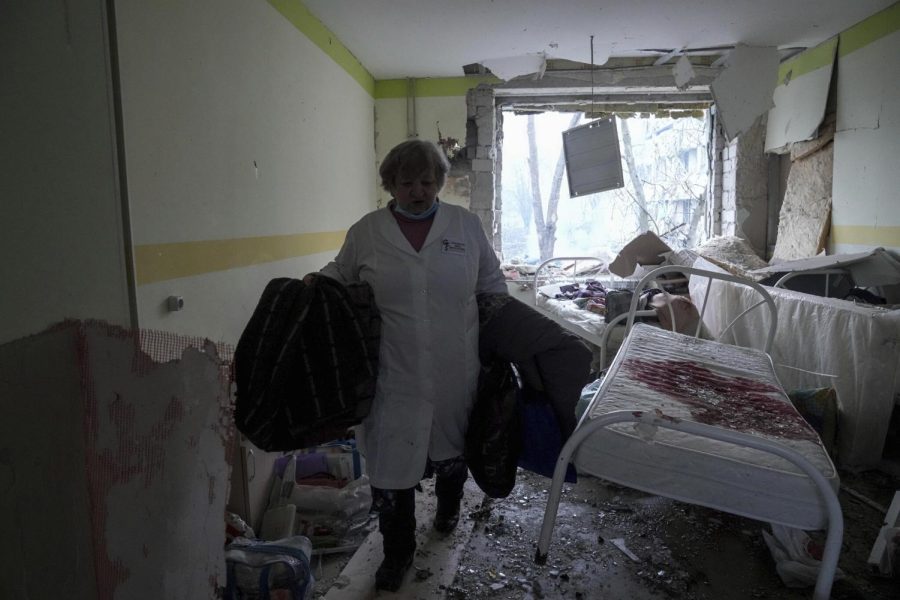
Dr. Houssam Al-Nahhas, the Middle Eastern and North American researcher for Physicians for Human Rights explains what it is like to be a doctor when one’s workplace is prone to be the victim of airstrikes, “It’s knowing that you are in a hospital and treating patients, and yet you can be targeted and killed at any moment. You need to provide the best care for your patients, but you’re also worried about your own safety.” In Syria alone, a mass shortage of doctors was prompted after the bombing of hospitals. Some medical workers died in the attacks, but others had to make the heart-wrenching decision to flee, leaving the public even more vulnerable. Moreover, many doctors (those that are left) face unsurmountable stress as the few professionals remaining. Those who were trained in family medicine and other non-trauma specialties may soon be asked to treat victims of war. Dr. Al-Nahhas experienced this himself, “I was in Syria for two years literally living in the hospital. It was rewarding to see the impact of the work [medical care] on people, but it was not sustainable because of the stress on all the health care providers. We were not used to seeing so much trauma. We had to learn as we went along how to treat war-related injuries that we had never seen before.”

Based on Russia’s previous attacks on health care in Syria, professionals already know its devastating effects and the future that likely awaits Ukraine. Analysis of case histories of the al-Altareb hospital in Aleppo, which suffered from three airstrikes, showed that civilians were less likely and willing to seek medical aid after a nearby hospital was targeted. Notably, there was a drastic decrease of 78% in prenatal and reproductive health consultations and a 27% decrease in normal deliveries. More and more, pregnant women would opt for voluntary C-sections because they feared spending too much time in a hospital. Moreover, vaccination efforts tend to decline when vaccinators are attacked. Sometimes whole vaccination initiatives have to be suspended, leaving civilians with both the fear of war and disease. In Ukraine, this trend is already clear with COVID-19 vaccinations. Prior to the invasion, a minimum of 50,000 people were being vaccinated each day. Now, only a fraction of those vaccinations continue. The WHO reports that between February 24th and March 15th, just 175,000 people received the vaccine in Ukraine. That number should have instead been closer to around 1,000,000 people if the pre-invasion vaccination rate had not plummeted.
In Syria, hospital bombings became such a recurrent menace that health care facilities moved underground. This protective strategy may be implemented in Ukraine if the Russian conflict is prolonged. Currently, about 1,000 Ukrainian health care facilities reside in areas of Russian occupation or near the front lines, so they could be subject to damage in the near future.
A Call for Help
With each subsequent hospital bombing, children, mothers, and fathers are killed. However, what most onlookers don’t realize is that critical medical supplies, ranging from oxygen to blood transfusion kits, are also being purposefully destroyed. In essence, attacks on the health care system create a vicious cycle of suffering. When a bomb detonates, lives are lost. Each day there are fewer and fewer doctors, which means fewer professionals to help the ill. However, when medical supplies are destroyed, health care workers lack the tools to help those who could have easily been saved. Think of a diabetic child who has no access to insulin.
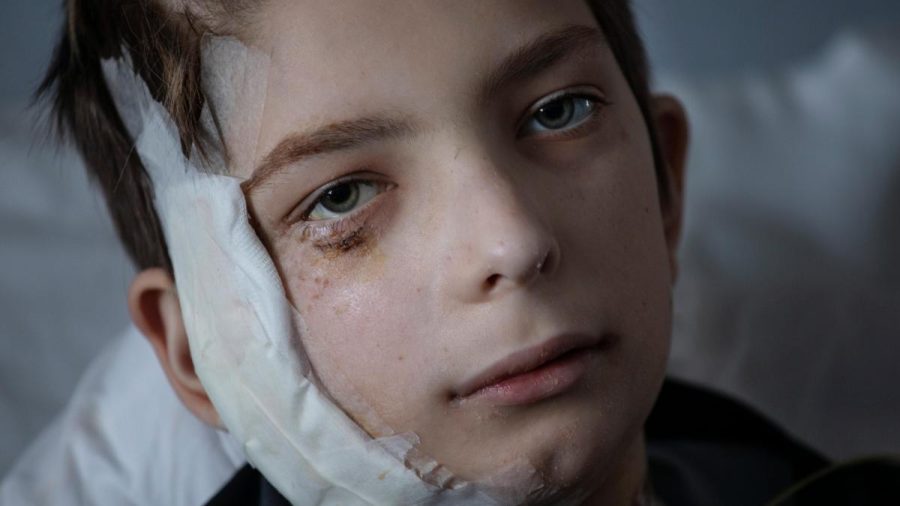
On March 3rd, the WHO foundation launched an emergency appeal calling on people throughout the world to help raise $57.5 million to “fund the large-scale emergency response needed to deliver urgent healthcare and support the immediate health needs of those affected by the crisis, in Ukraine and surrounding countries.” However, as of March 16th, the WHO had received just $8 million (less than 14% of the needed sum). So, WHO Director-General, Tedros Adhanom, addressed the public directly, explaining, “Huge amounts are being spent on weapons. We ask donors to invest in ensuring that civilians in Ukraine and refugees receive the care they need.”
The WHO reports that since February, Ukraine has been struggling with dangerously low medical oxygen supplies. Due to the Russian invasion, trucks are no longer able to transport oxygen supplies from plants to hospitals across the country. Even the capital of Kyiv has problems with supply chains. So, to alleviate the stress, the WHO has sent over 460,000 pounds of emergency medical equipment to Ukraine, including oxygen, insulin, electric generators, and blood transfusion kits. However, more aid is still needed.

“The people of Ukraine need urgent action and support from the rest of the world to ensure its health care is functioning and protected so further loss of life is prevented,” advocated Anil Soni, CEO of the WHO Foundation. “I urge anyone who can to donate to ensure all those in need of basic health care, as well as those wounded and directly affected by the conflict, have safe access to lifesaving care.”
To find out more about the WHO’s Health Emergency Appeal for Ukraine and to donate visit https://www.ukraine.who.foundation/.
As a community, our hearts go out to the victims of the crisis in Ukraine. Such blatant attacks on human rights should never be tolerated. After all, for many Ukrainians, health care means the difference between life and death.

